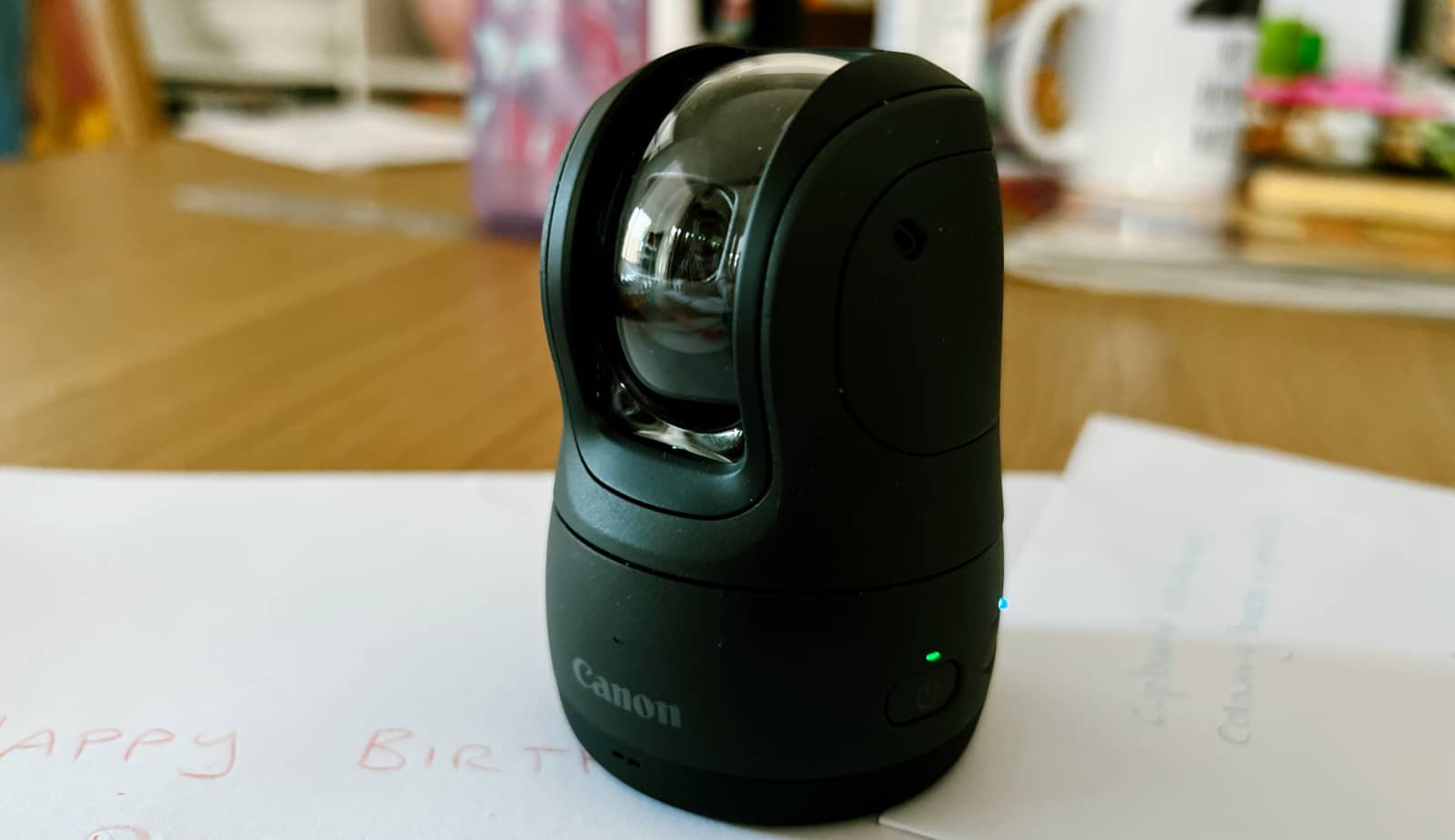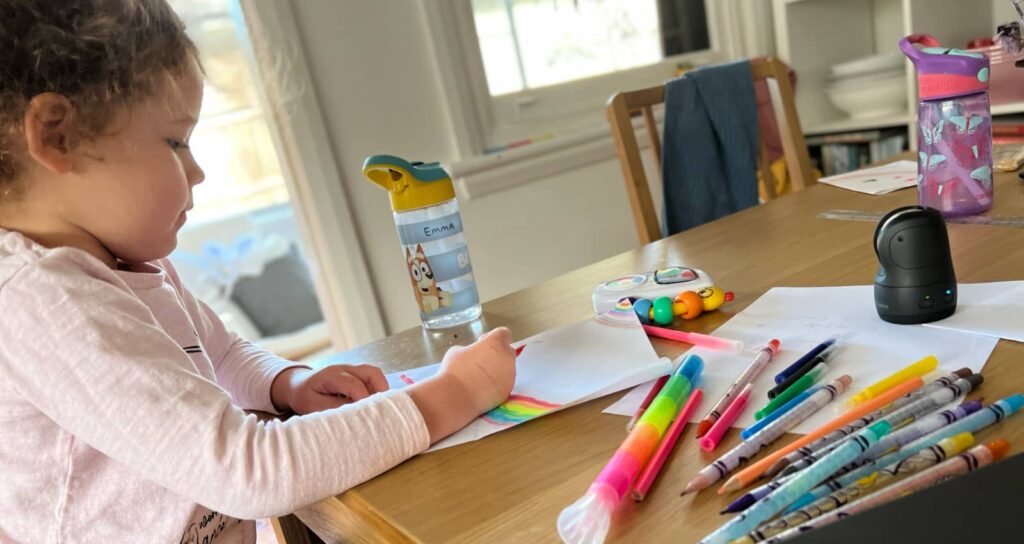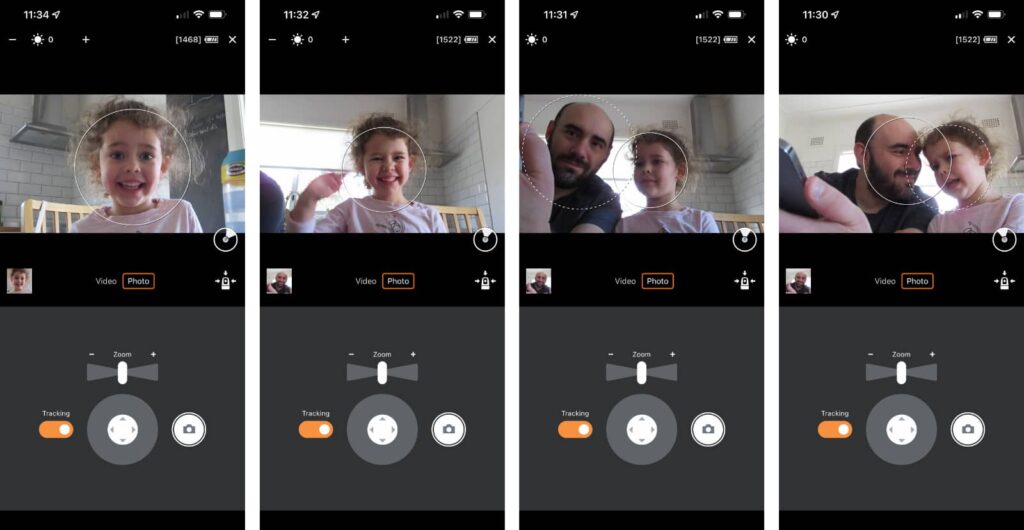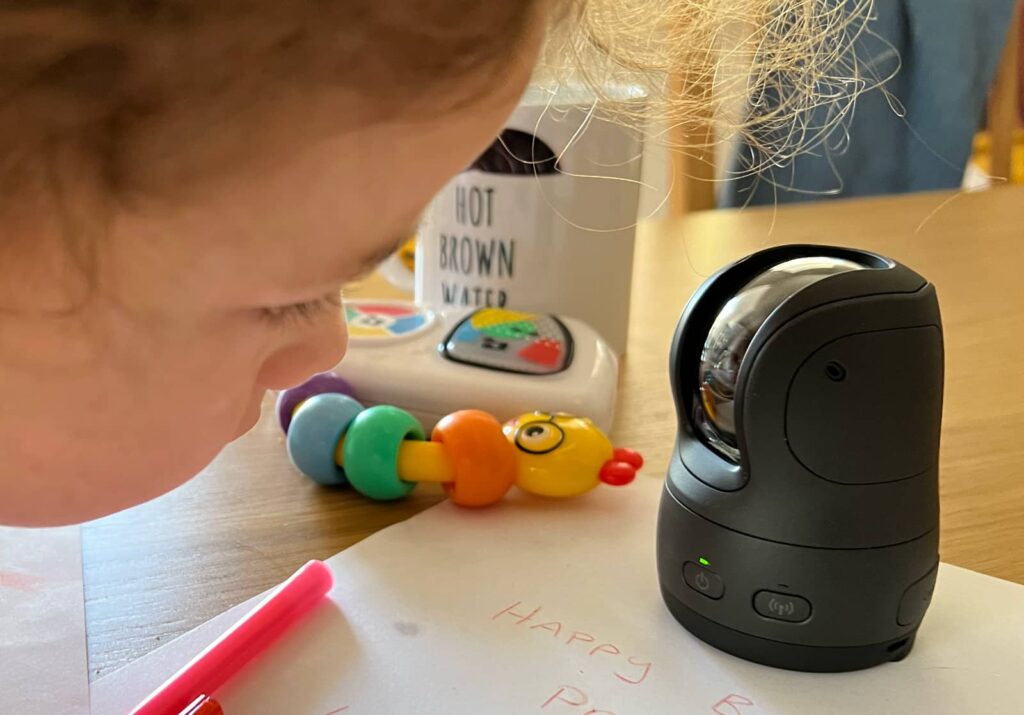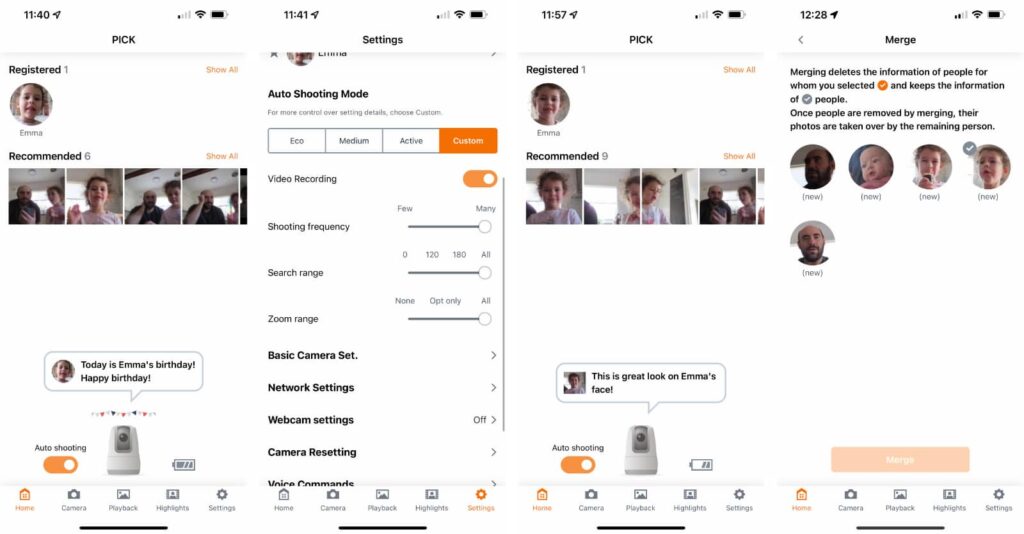Quick review
The good
The not-so-good
A camera that takes pictures of you without you needing to touch it? The Canon PowerShot Pick isn’t what we expected. But is it worth the price you pay?
The first time I heard about Canon’s face-tracking camera, the PowerShot Pick, I thought it was Canon joining the world of social video. We’ve seen a face-tracking iPhone stand from Belkin and there are even selfie drones on the way from the maker of Snapchat, but while social video rages on fire, we’ve not seen an actual camera brand enter this arena. Even Apple includes a similar technology on every model of its iPad, including the entry-level iPad, using Centre Stage to track and zoom position.
And then this thing popped up. The PowerShot Pick is Canon’s first play in this space, and looks a whole lot like a webcam, the sort of thing you can see Logitech doing, or maybe even a security camera company.
Start to use it, and you might find that it’s an example of life imitating art, and a great way to entertain the kids on a Saturday morning, or even at your next in-person social shindig.
Design and features
A camera with a name very similar to this publication, the PowerShot Pick isn’t your ordinary compact camera. It is definitely compact, and it is indeed a camera, but while models in the PowerShot line are typically meant to be carried around, the PowerShot isn’t like that.
Rather, you’re supposed to set it up and move on.
There are two buttons to the whole thing — power and wireless — plus a microSD card slot and a Type C power port, and there’s even a tripod screw mount on the bottom, but this is not a typical camera by any stretch of the imagination.
More like a webcam, the Canon PowerShot Pick is a camera meant to be controlled via app on phone (iOS or Android), or even using your voice. Or you can let the camera do its own thing, because that’s what it is designed to do.
At the heart is an 11.7 megapixel sensor with support for Full HD video, supporting a maximum of 3X optical zoom handling a 35mm equivalent of 19 to 57mm. To put it simply, that’s wide to portrait.
In-use and ergonomics
Interestingly, there are no ergonomics on Canon’s Pick camera. It’s just not made to be held, and begs you to put it down on your desk, leave it there, and do your thing.
It can be controlled by an app on iPhone and Android, twisting on its rotor to match where you want to capture, and zooming if need be. There’s also some voice control, which responds with cute chips, and you can also set the camera up to automatically track faces, supporting up to 12 registered images (faces), and tracking what it recognises.
Once it has that data, the Pick can take pictures of anything it likes, zooming in on registered faces, on scenes, on objects and trying to capture a combination of video and images based on what its artificial intelligence deems as interesting and important. It basically becomes like something out of Rick & Morty.
Watch that show and you might occasionally see a character pop up, walking around to individuals and staring at them.
“I am not staring at you. I am a cyborg photographer. Just act natural. This is a candid shot,” says the robot photographer, a replacement for the standard photographer at a wedding, specifically in Birdperson’s wedding at the end of Rick and Morty Season Two.
In a way, the Canon PowerShot Pick is channeling that vibe, capturing images without needing you to pay attention. Just act natural, these are candid shots.
Image performance
When the images are captured, you should find them available through the app or if you take the microSD card out, which you need to actually make the PowerShot Pick function.
Images are captured in 11 megapixels max, which isn’t amazing, but does the job, and it can get a little closer at times to snap a nice candid here and there.
At its widest, the shots almost seem like they’re close to being ultra-wide and a little soft, while the small amount of zoom on offer means you can get a little close with marginally more clarity.
We need to point out that while the gimmick is cute, the image quality on offer from the Canon PowerShot Pick isn’t exactly game changing. Camera shots are acceptable with strong light, but lower the amount and the quality becomes softer.
It’s just not a great result, especially for the price, and suggests that you’re paying for the automatic tracking more than anything else.
Video performance
The 11 megapixel sensor also means video performance is going to miss out on 4K video, with Full HD 1080p the maximum you’re going to see in the Canon Pick, which can feel just a touch underwhelming.
Quality on offer in our testing was acceptable, with the camera delivering that ultra-wide style with a slight softness. The results are a little like a phone’s video capture, but with a much wider scope. Fine, but not amazing, in line with what we saw from the images.
Battery
Battery is one area the Canon PowerShot Pick won’t win awards, because it is not fantastic.
We’re guessing stuffing this technology down into a compact size has caused the camera to really struggle to hold onto life, and the most you’ll really get out of the Pick is roughly three hours of operation.
Fortunately, Canon has opted to use the EU standard of Type C USB for the PowerShot Pick, so you can typically keep it charged quite easily.
Value
The price also gives us pause, because while its $629 Australian price doesn’t seem like a whole heap for a camera, it’s also not a remarkably versatile camera.
Made primarily for the purpose of random candids, plus using as a webcam in a pinch, the Canon PowerShot Pick feels like a one-trick pony: capture pictures automatically for a short time, and that’s it.
You can take this camera out and about, of course, and capture photos of a scene; you could position this on a bench, stand with friends, and call out “Hello Pick, snap a picture” to take a shot in front of something, like the Opera House or another monument. But you can do the same sort of thing with pretty much any other camera, and you’ll probably get better quality and more control for other things.
A six hundred dollar cost for what basically amounts to a webcam with some extra AI-enhanced guts doesn’t feel like value to us, especially given what needs work.
What needs work?
One of those things is the sensor, which feels low-end given the cost. You’ll find an 11.7 megapixel sensor with Full HD video in the $629 PowerShot Pick, while a much older Canon PowerShot SX740 HS offers up a 20 megapixel sensor with 4K support for a little less. It even has more zoom to work with, and works with Canon’s app, as well.
Basically, the PowerShot Pick doesn’t feel like a real camera, which can be had for roughly the same price and gets you more. Sure, the proper compact camera skips out on the automated capture, but it also actually functions as a camera for more than one or two gimmicks.
Clearly, automated capture is one of those gimmicks, but another is voice control, and there isn’t enough there. It’s not remotely flexible to say the least.
Controlling the PowerShot Pick consists of saying one of four things to it, and while its chirp responses are cute, it doesn’t always listen well, nor does it offer any versatility in how you might say those trigger statements.
You might say “Hello Pick, snap a picture” which is the phrase to set it off and start snapping pictures, while “Hello Pick, record a video” does exactly what you’d expect. There’s also “Hello Pick, auto off” to switch off the automatic captures and “Hello Pick, find others”, which sets the camera into a sort of hunting mode to find other people as part of its 12 person capture list.
But that’s it. This is literally all the voice control Canon supports, and it’s not flexible. You need to specifically say “Hello Pick, snap a picture” to force the camera to take a photo. Not “Hey Pick snap a picture” or “Pick, snap a picture”, or even “Hello Pick, take a photo”.
No, it’s super specific, and you may find yourself wondering why Canon missed out on the opportunity to either flex some creativity here, or throw in some neural computing power to let the camera learn how you speak, rather than force you into a tight corner.
There’s also another gimmick of having the camera app stitch together a cute little memory video of photos captured on the Pick, but your phone’s photo app can probably do a better job, and without any effort. We’ve seen Google Photos handle that for ages, and Apple’s Photos app on the iPhone can do this, too. Canon adding it is a neat gimmick, but wholly unnecessary.

In theory, it’s easy: connect to the wireless network of the Canon Pick PTZ camera, and run through the connection process. Fair enough.
But in reality, what should have been a five minute process took closer to 50 minutes, with the app refusing to acknowledge and hold the connection, ending the setup, and struggling to complete. It’s just not always perfect, and may even require you to revive the setup process if you decide to do something else with your phone later on, something that happened to us on more than one occasion.
Canon is known for cameras, but great wireless and software, probably not. This is one area that needs some work.
Final thoughts (TLDR)
There are definite bugs in the setup, and some kinks Canon needs to work out. A better sensor, clearer images, and possibly a better price overall would help make the Canon PowerShot Pick all the more better.
Perhaps unsurprisingly, our four year old loved the camera. An automatic camera that basically captures for fun, the PowerShot Pick is fun but not worth the cost. If the price was lower, it would be easier to swallow. Right now, the PowerShot Pick is a pricey experiment that still needs just that little bit more to be better.



